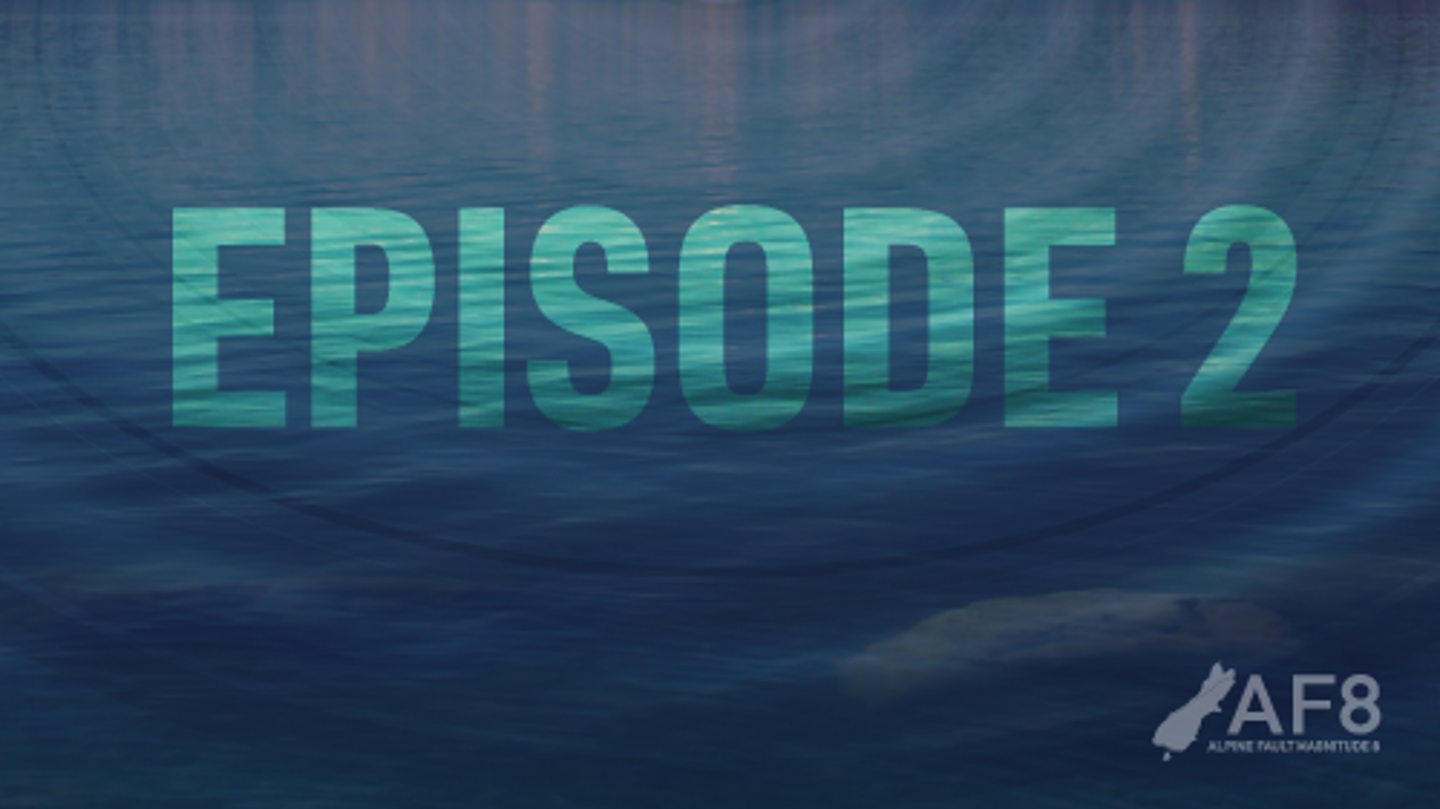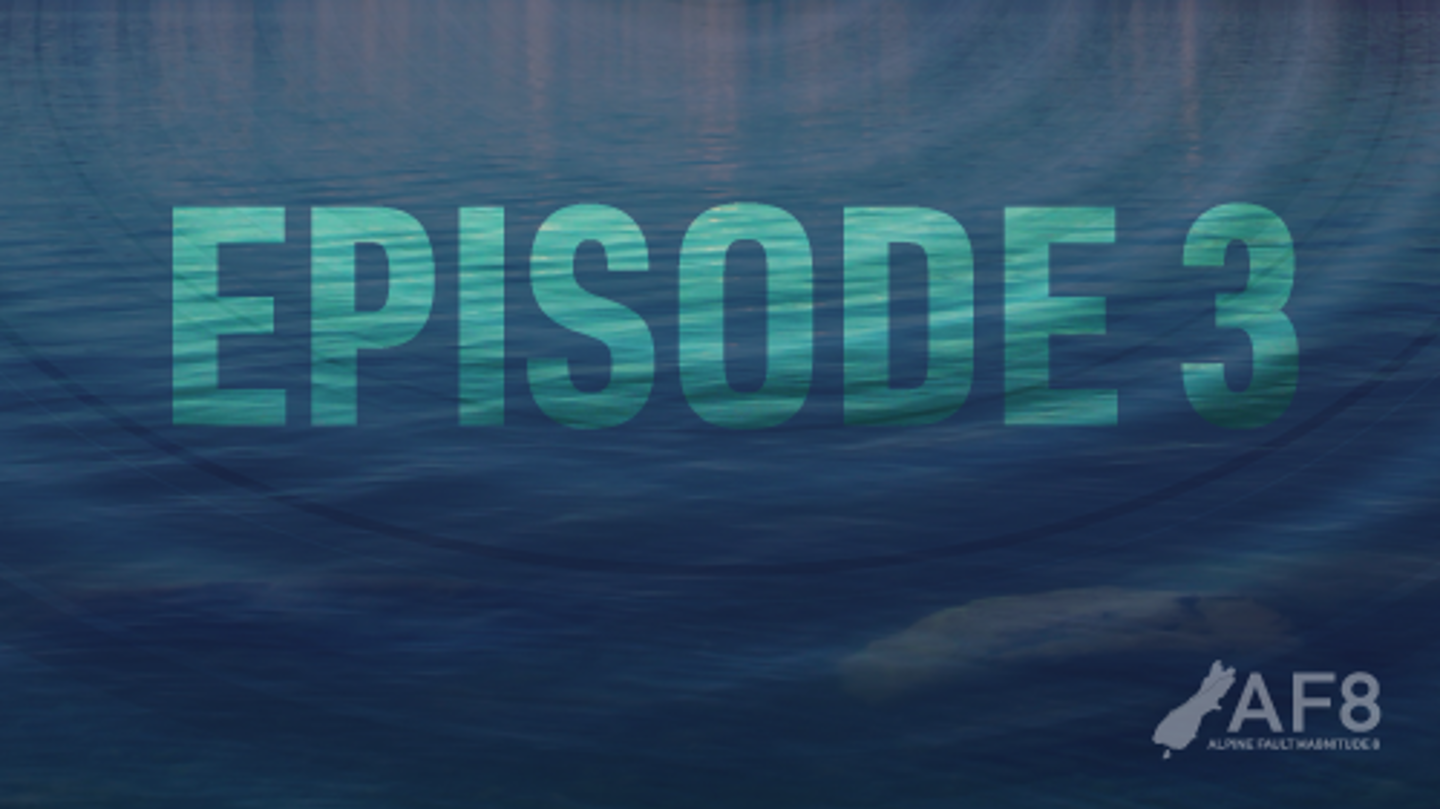
Earthquakes & Lakes
Meet Sam, who will be leading the investigation into the earthquake and lake hazards in the Mackenzie District. Learn what the Alpine Fault is and gain an understanding of the geological environment of the South Island of New Zealand, focusing on the Mackenzie District.

What is an earthquake scenario and how is it used?
In this episode we talk to Caroline Orchiston who describes the work AF8 has done to produce an earthquake scenario and its use to help us anticipate the possible outcomes of an earthquake on the Alpine Fault. We also talk to Kaley Crawford-Flett who explains the steps undertaken to minimise the risks of dam failure in a large earthquake.

What is a lake tsunami and how do we know about them?
In this episode we talk to Helen Jack and Joshu Mountjoy, who have worked to understand the geology of Lake Tekapo/Takapō – both above and below lake level – to establish the possible risk of lake tsunami.







